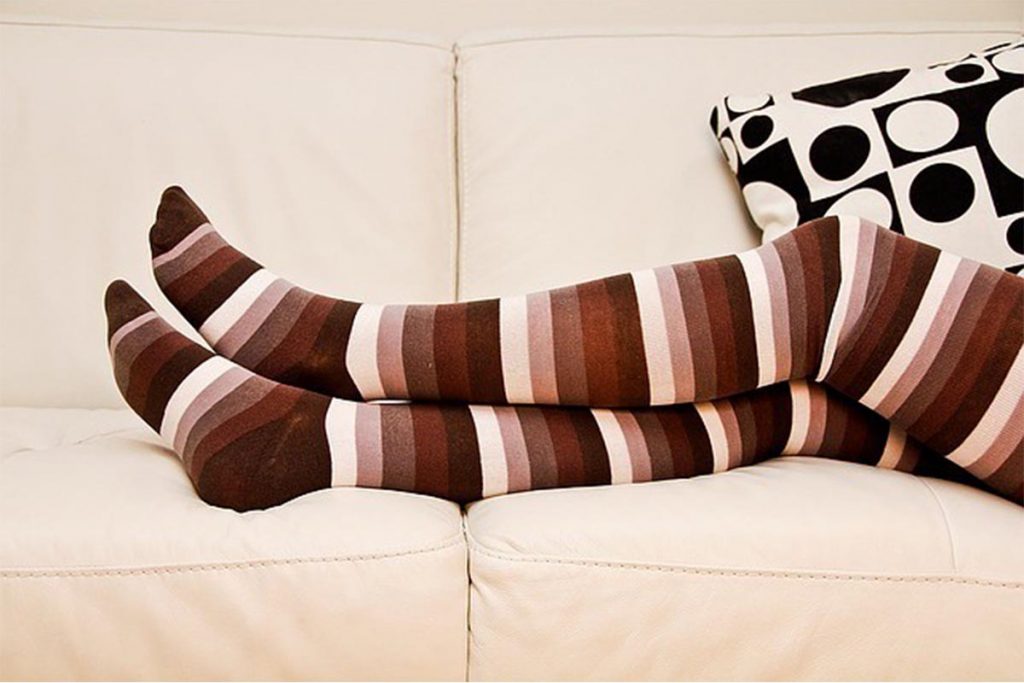Should You Worry About Sock Indentation Marks On Your Legs?

If you wear very tight socks, sock marks will appear on your legs the moment you remove them after a long day. However, your legs may be signaling underlying health conditions. Peripheral edema is one of them. If the marks are mild and do not happen often, then you should not worry. If the marks recur or the swelling gets worse, it could be a sign of a chronic health problem such as diabetes or heart disease.
Sock indentation marks often take the exact shape of the socks worn. These indentations are not normal even when they happen occasionally and should be evaluated by a health professional.
Peripheral Edema is The Most Common Trigger
Your feet, ankle, and lower legs are the most common places you will see edema resulting from fluid buildup in your body. Defined as palpable swelling resulting from increased fluid volumes in a tissue, it can happen in any part of your body. But because of the forces of gravity, it appears as painless swelling in the lower extremities of your body. Understand that there is localized and generalized edema. Generalized appears in the form of collected fluid volumes in many body organs, and localized occurs in certain parts of your body. Leg edema is the most common localized type.
Peripheral edema is not painful and is mostly caused by a systemic problem within your kidney or heart or issues with veins within the area affected. If you only have swellings in the legs without pitting, you could be having problems with your lymphatic system or thyroid. Pitting edema is when indentations are left when pressure is applied behind on the skin. The skin around the affected area may feel heavy and tight, and could also appear stretched and shiny.
How Does Peripheral Edema Occur?
Edema occurs when fluid from the capillaries flow inside the interstitial space. The condition can be a clinical sign of various diseases, with its progression often accompanied by physiological changes. It is a process triggered by increased pressure within the smallest blood vessels – the capillaries. Capillaries distribute oxygenated blood to tissues and transport it to the veins from the tissues.
Pressure build-up within the capillaries forces water out of the blood vessels and distribute it in the tissues. This then leads to an increase of protein in the blood causing more fluid to be pushed back to the vessels. The factors contributing to the formation of periphery edema include:
- Obstructed lymphatic drainage
- Increased hydrostatic pressure
- Increased vessel wall permeability
- Water retention in tissues
- Increased tissue oncotic pressure
What Causes Peripheral Edema?
Older people are at a higher risk of having large collections of fluid around the feet. Standing or sitting for too long can also cause swelling. After taking off shoes or socks, you may notice socks indentation marks. The signs are not always a cause for worry, unless the pitting does not clear up quickly. One of the most serious causes of peripheral edema is venous insufficiency. Certain antidepressants such as blood pressure medications can also contribute to the occurrence of edema. Should you swell when you’re under medication, let your doctor know.
Venous Insufficiency
Venous insufficiency is a condition that can be signaled by swollen feet and sock indentation marks. If you have had clots in your legs, you may be at risk of this condition. When the walls of the veins inside your legs become weak, and the valves repelling blood into your veins get damaged, venous insufficiency is likely to occur. Because of the damage to the valves, some of the blood flows back and collects in the veins of the legs and feet. Compression stockings, in this case, will be necessary to maintain a steady flow of blood. Avoid tight socks that could leave indentations behind.
When to See Your Doctor
Persistent peripheral edema needs a physical examination for proper diagnosis. Because some conditions linked to sock marks and swelling are serious, the underlying cause needs to be established. Edema resolves after the treatment of the underlying cause. A detailed medical history, imaging tests, urine, and blood tests may be needed.
If only one leg is affected, there could be a possibility of cellulitis. Sock marks could also be a sign of existing blood clots in the leg, a condition known as deep vein thrombosis. Report this to your doctor immediately to prevent the clot from finding its way to the lungs. Should it settle in your lungs, pulmonary embolism, a fatal condition could set in.
Peripheral edema becomes more apparent with age and can often be controlled with home care such as elevating the legs, limiting the dietary intake of sodium, and standing less. If it persists, it may be a signal of severe illnesses such as congestive heart failure. Reporting sock marks to your doctor early enough can be a means of preventing edema complications.
Popular Articles:

Yes, You Should Watch Out for and Prevent Prediabetes!

Should You Get Screened for Diabetes?

Steer Clear From Diabetes in 13 Ways


Why Carbohydrate Counting Can Be Good For Diabetics


